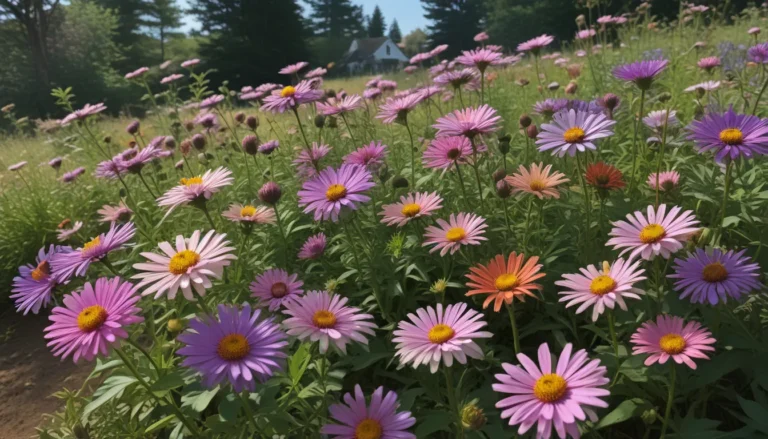A Complete Guide to Growing and Caring for Fountain Grass

Fountain grass, scientifically known as Pennisetum spp., is a versatile and beautiful plant that can add a touch of elegance to any garden. Whether you are a seasoned gardener or a beginner looking to add a unique plant to your landscape, fountain grass might be the perfect choice for you.
Introducing Fountain Grass
Fountain grass is a mounding ornamental plant that resembles a fountain without the need for water. With its cascading leaves and bottle brush flower spikes, this plant adds all-season interest to your garden. Available in various types, fountain grass is easy to grow and adaptable to different environments.
If you are intrigued by this unique plant and want to learn more about how to grow and care for fountain grass, keep reading to discover all the tips and tricks you need to make your landscape flourish.
What Is Fountain Grass?
Several species of the Pennisetum genus are popular for ornamental use, including P. glaucum, P. setaceum, and P. alopecuroides. These true grasses grow in mounded clumps and offer a striking appearance throughout the year. From green leaves that turn golden yellow in the fall to colorful flower spikes reminiscent of a fountain’s spray, fountain grass is a showstopper in any garden.
Cultivation and History
Native to warm temperate and tropical regions around the world, Pennisetum plants are prized for their hardiness and appearance. With over 130 species in the genus, fountain grass is a popular choice for landscaping due to its beauty and adaptability. Introduced to the United States in the late 19th century, fountain grass is now grown in many parts of the country, often thriving in various climates.
Propagation
Fountain grass can be grown from seed or propagated by division. Some cultivated varieties are sterile to prevent unwanted spread. Starting seeds indoors in early spring or dividing mature plants in late winter are common methods of propagation for this stunning plant.
Growing from Seed
- Sow seeds indoors in early spring or directly in the ground after the last frost.
- Water generously until germination occurs, usually within two to three weeks.
- Transplant seedlings outdoors gradually to acclimate them to the outdoor environment.
By Division
- Divide mature fountain grass plants in late winter or early spring for propagation.
- Cut back existing growth and carefully separate the outer edges of the root ball to create new plants.
- Replant the divided sections to establish new fountain grass specimens.
Transplanting
- Plant transplants in a sunny location with well-draining soil.
- Provide adequate spacing between plants for optimal growth.
- Water newly transplanted fountain grass deeply to establish healthy root systems.
How to Grow
To grow fountain grass successfully, plant it in a sunny location with well-draining, fertile soil. While full sun is ideal, this plant can tolerate partial shade as well. Regular watering and occasional fertilizing in the spring will help fountain grass thrive in your garden.
Growing Tips
- Plant in full sun for best results.
- Water weekly until established.
- Fertilize in the early spring as needed to promote healthy growth.
Pruning and Maintenance
Pruning fountain grass is essential to maintain its health and appearance. In late winter or early spring, trim back the plants to encourage new growth. Wear gloves to protect your hands from the sharp blades of the plant. To prevent self-seeding, remove seed heads before they shatter and spread. Container-grown specimens can be protected from cold temperatures to grow as perennials.
Cultivars to Select
Several popular cultivars of fountain grass offer unique characteristics for your garden. From compact varieties suitable for small spaces to striking options with dark purple flower spikes, there is a cultivar to suit every gardener’s taste.
Popular Cultivars
- Cassian: Dusty brown flowers with golden fall foliage.
- Foxtrot: Cold-hardy with rosy inflorescences and flowing blades.
- Hameln: Short and compact with purple flowers and fluffy plumes.
- Little Bunny: Compact, suitable for partial shade, and ideal for small spaces.
- Moudry: Striking black fountain grass with dark purple flower spikes.
Managing Pests and Disease
While fountain grass is generally hardy and resilient, it can be susceptible to certain pests and diseases. Monitoring for aphids, mites, rust, and powdery mildew is crucial to maintaining healthy plants. Taking preventive measures such as proper watering, spacing, and plant care can help reduce the risk of infestations and diseases.
Common Pests and Diseases
- Aphids: Small insects that can cause yellowing and weakening of the foliage. Control with neem oil or natural predators.
- Mites: Tiny arachnids that suck juices from grass blades, causing yellowing. Avoid dry conditions to prevent infestations.
- Rust: Fungal disease causing yellow or red-orange blisters on leaves. Disposal of affected plant parts can prevent the spread of rust.
- Powdery Mildew: Fungal disease resulting in powdery blotches on leaves. Plant in full sun and maintain proper airflow to prevent powdery mildew.
Best Uses
Fountain grass is an excellent choice for creating focal points, borders, or mass plantings in your landscape. Its versatility allows it to thrive in various settings, including rock gardens, water features, and containers. With its all-season interest and striking appearance, fountain grass is sure to add a special touch to your garden.
Quick Reference Growing Guide
For a quick overview of key information on growing and caring for fountain grass, refer to the following guide:
- Plant Type: Ornamental grass
- Native to: Africa, Asia, Latin America, Australia
- Hardiness (USDA Zone): 4-10
- Bloom Time: Summer/year-round interest
- Exposure: Full sun to partial shade
- Water Needs: Low
- Height: 12-48 inches
- Spread: 12-36 inches
Use this guide as a reference for planting, caring for, and selecting the right cultivar of fountain grass for your garden.
Conclusion
In conclusion, fountain grass is a versatile and stunning plant that can transform your landscape with its unique foliage and beautiful flowers. By following the tips and guidelines outlined in this comprehensive guide, you can grow and care for fountain grass successfully in your garden. Whether you are a novice gardener or an experienced enthusiast, fountain grass is an excellent choice for adding beauty and interest to your outdoor space.
Do you have a favorite cultivar of fountain grass? Share your experiences and landscaping ideas in the comments below. And if you found this guide helpful, be sure to explore more information on growing and caring for ornamental grasses in your garden. Happy gardening!





